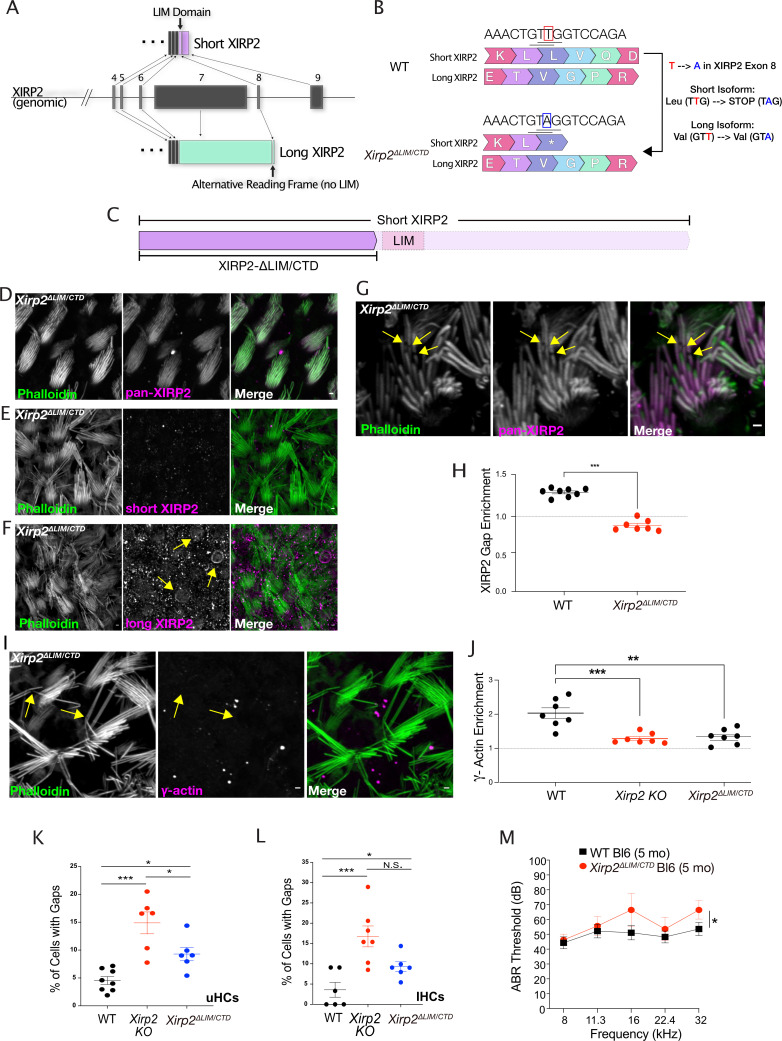Figure 6. The C-terminal domain of Xin actin binding repeat containing 2 (XIRP2) is required for its recruitment to gaps, and its deletion in the Xirp2ΔLIM/CTD mice causes an accumulation of gaps and mild hearing loss.
(A) Diagram of Xirp2 gene structure and isoforms indicating the position of the LIM domain and the region of alternative reading frame targeted in the generation of the Xirp2ΔLIM/CTD mice. (B) Diagram indicating the position of the 1 bp substitution in exon 8 of Xirp2 to generate the Xirp2ΔLIM/CTD mice. The T→A mutation introduced a stop codon in the short isoform but did not alter the amino acid sequence of the long isoform. (C) The LIM domain of short XIRP2 and the rest of the C-terminus is removed from short XIRP2 in Xirp2ΔLIM/CTD mice. (D) XIRP2-ΔLIM/C-terminal domain (CTD) (recognized by an antibody against the N-terminus) is still expressed and localizes to the hair bundle. (E) Immunostaining with an antibody targeting the CTD of XIRP2 is absent in Xirp2ΔLIM/CTD mice, indicating the successful truncation of short XIRP2. (F) The bundle signal in Xirp2ΔLIM/CTD mice is not due to compensatory localization of long XIRP2. (G) Unlike full-length XIRP2, XIRP2-ΔLIM/CTD immunostaining is not enriched at gaps (yellow arrows). (H) Line scan of fluorescence intensity in phalloidin (green) and XIRP2 (magenta) channels along the length of a gap in Xirp2ΔLIM/CTD mice in which XIRP2 is not enriched. (H) The enrichment of XIRP2 immunostaining at gaps is decreased from 1.27-fold in wild-type (WT) mice to 0.85-fold in Xirp2ΔLIM/CTD mice (***, p<0.0.001). n=8 utricles, 4 mice per group. (I) γ-Actin immunostaining enrichment is decreased in gaps (yellow arrows) in Xirp2ΔLIM/CTD mice. (J) γ-Actin gap enrichment is decreased from ~2-fold in WT to 1.3-fold in Xirp2ΔLIM/CTD mice (***, p<0.001). n=7 utricles, 4 mice per group. Values for Xirp2 knockout mice is same as in Figure 5J. (K) There is a significantly larger percentage of utricle hair cells with gaps in P20 Xirp2ΔLIM/CTD mice than in age-matched WT mice type (*, p=0.0255). WT: n=8 utricles, 4 mice; Xirp2ΔLIM/CTD mice: n=6 utricles, 3 mice. (L) There is a significantly larger percentage of inner hair cells (IHCs) with gaps in P20 Xirp2ΔLIM/CTD mice than in age-matched WT mice (**, p=0.007). WT: n=6 organs of Corti, 3 mice; Xirp2ΔLIM/CTD mice: n=7 organs of Corti, 4 mice. (M) Xirp2ΔLIM/CTD C57Bl/6J mice have elevated hearing thresholds compared to WT mice at 5 months of age, as measured by auditory brainstem response (ABR) (*, p=0.031). n=14 WT mice, 8 Xirp2ΔLIM/CTD C57Bl/6J mice. All scale bars are 1 μm. Error bars represent standard error of the mean (SEM). Images are representative of >3 experiments.

